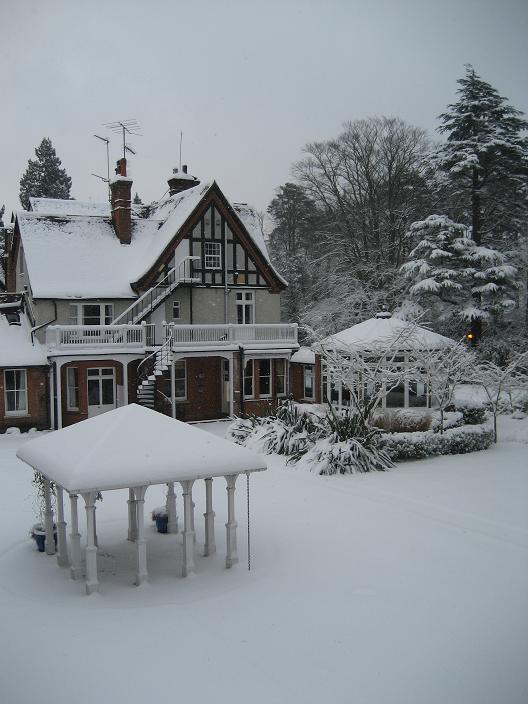MAX 2008 is over so I though I would add my list of highlights and random thoughts.
C/C++ to AS3 conversion
Last year at MAX Adobe talked a bit about converting c/c++ to AS3 during the sneak peaks. This year there was some more information and there was a session on Project Alchemy. The way it works is that Adobe has a bunch of library code that mimics the standard C libraries, a toolchain to configure and compile and then you can call your library with a bunch of glue code from AS3. This is far from finished, it is just a research project and not even a pre-product, but it is available on labs.
The demo’s were pretty impressive and showed Quake, crypto libraries (OpenSSL) and sound code. Most of the technical stuff was way over my head, but one of the comments I did understand was that there were no OS libraries and no socket code. So I guess we will have to wait for a while before we can compile C++ database drivers to AS3 and build native database tools (unless you want to try beta drivers for MySQL).
Adobe Enterprise Developer Program (AEDP)
The AEDP is a new program to help Enterprise developers (Flex, AIR and LiveCycle ES) with direct access to Adobe support engineers. For an annual fee Adobe commits to providing tools, software and most importantly support with a guaranteed 1 business day response time. It seems tobe mostly geared towards Adobe LiveCycle ES customers.
Looks like the support is not for the other Enterprise product, ColdFusion. I guess it isn’t really needed there anyway with the engineering team being regulars in the community and on mailinglists.
Flash Catalyst
Formerly known as Project Thermo, Flash Catalyst will bring designer - developer workflows for Flex. Designers working with Flash Catalyst can work in the same project as developers working with FlexBuilder without having to go through a whole manual export from CS4 - import into FB cycle after every change. The current Beta on labs is Mac only at the moment.
AIR 1.5 released
And it immediately fixed several crashing issues I had with the previous version.
ColdFusion IDE announced
At last Adobe announced a new IDE for ColdFusion: Bolt. The name is a tribute to the lightning bolt that used to be the ColdFusion logo. Apart from a fleeting mention of support for the native ORM due in Centaur and support for community frameworks no further information is available at the moment.
And for the random thoughts.
Which labs not to choose
To start with the bad stuff I have come up with a way to identify which labs are a waste of time. If a lab is:
- presented by somebody from Adobe Consultancy,
- who is not a native speaker,
- and does not have an Instructor certification,
don’t go. It is a waste of time. The lab will be written without proper definition of learning targets, without a delivery strategy and will end with a ten minute monologue that is more about “look how much I know about Maven/EJB/whatever” then about teaching.
Adobe should wake up and realize that labs should be taught by certified instructors and evangelists.
In the interest of full disclosure, yes, I am a certified instructor. And I am not the easiest one for my students, because I want to train them to the level where if they were on my development team I would feel that I could assign tasks to them and they could complete them (as opposed to a teaching strategy where you leave nobody behind even if that slows the entire group down). But some of the labs during MAX were outright ridiculous. And not just this year, the same happens every year.
Where was LiveCycle?
As a product manager of another product said: “With more then 80 products not every product can get a mention.” But LiveCycle is Adobe’s flagship, multi-billion dollar Enterprise suite and it was nowhere. In three days the only mention LiveCycle got on the main stage was as a hidden part in a movie production workflow during a sneak peak. There were only 2 advanced sessions on the LiveCycle servers. I know LiveCycle isn’t the sexiest product around, but this is a bit extreme.
On the upside there were people at the support lab that knew about LiveCycle and they are going to open a case to investigate my installation problems.
Cloud Computing?
One of the themes of the keynote was “Client + Cloud”. So what is the progress on taking Adobe’s products to the cloud? Does ColdFusion have any licensing form to allow it to run on the cloud for a per CPU-hour price? No. Does LiveCycle have any licensing form at all to allow it to run on the cloud for a per CPU-hour price? No.
The only progress on taking the existing products to the cloud is that LiveCycle will be put on the cloud by Adobe and people can get 10 hours of cloud-time for a testdrive. “Getting our toes wet with cloud computing” was what Adobe called it. If you are going to do that, you might as well install the developer editin of LiveCycle and take it for a 1 year testdrive.
